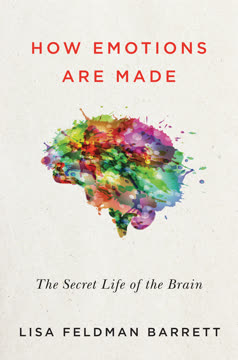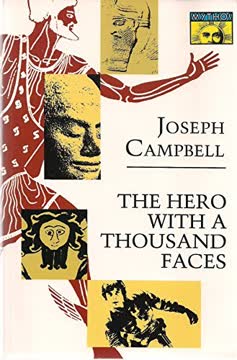重点摘要
1. 修辞是说服的艺术,塑造人类互动和社会
修辞是语言的游戏——语言的升华。它是说服和劝诱,激励和迷惑,激动和误导的工具。
无处不在的影响。 修辞不仅仅用于正式演讲或辩论;它渗透到我们生活的方方面面。从日常对话到政治竞选,从广告到文学,修辞塑造了我们如何交流和感知周围的世界。它是驱动人类互动和决策的无形力量。
历史意义。 纵观历史,修辞一直是社会和政治变革的强大工具。美国革命、民权运动和重大政策转变都依赖于有效的修辞。理解修辞使我们能够欣赏其在塑造社会和文化中的作用,并认识到其在我们日常生活中的影响。
批判性思维工具。 通过学习修辞,我们成为更有辨别力的信息消费者。它使我们能够分析论点,识别操纵,并做出明智的决定。在信息过载和“假新闻”的时代,修辞意识是驾驭现代复杂交流环境的必备技能。
2. 说服的三大支柱:伦理、逻辑和情感
伦理:“买我的旧车,因为我是汤姆·马格里奥齐。” 逻辑:“买我的旧车,因为你的车坏了,而我的车是唯一在售的。” 情感:“买我的旧车,否则这只患有罕见退行性疾病的小猫将痛苦地死去,因为我的车是我世界上最后的资产,我卖它是为了支付小猫的医疗费用。”
伦理:建立可信度。 伦理诉诸于演讲者的品格和权威。它关乎建立信任和展示专业知识。有效的伦理使用包括:
- 展示相关的资格或经验
- 展示与观众的共同价值观
- 保持一致和真实的形象
逻辑:诉诸逻辑。 逻辑依赖于理性和证据来说服。它包括:
- 提供事实、统计数据和专家意见
- 使用清晰、合乎逻辑的推理
- 预见并解决反对意见
情感:激发情感。 情感诉诸于观众的感受和价值观。有效的情感使用包括:
- 使用生动的语言和图像
- 讲述相关的故事或轶事
- 诉诸共同的希望、恐惧或愿望
平衡这三种元素对于有效的说服至关重要。虽然逻辑提供了论点的实质,伦理确保观众信任演讲者,而情感则激励他们根据所提供的信息采取行动。
3. 发明:发现最佳的说服手段
亚里士多德说,修辞学家的基本工作是“发现最佳的说服手段”。
针对观众量身定制。 有效的发明需要对观众有深刻的理解。考虑他们的:
- 人口统计(年龄、性别、教育等)
- 价值观和信仰
- 对话题的现有知识和态度
- 潜在的反对意见或担忧
收集证据。 收集一系列支持材料:
- 事实和统计数据
- 专家意见
- 历史例子
- 个人轶事
- 类比和隐喻
发展论点。 通过以下方式构建有说服力的论点:
- 确定关键问题和争议点
- 预见反对意见
- 与对手找到共同点
- 以有利的角度框定问题
发明不是编造信息,而是发现和组织最有说服力的论点和证据。它是所有其他修辞方面的基础。
4. 安排:为最大影响力构建你的论点
安排被认为是演讲五部分中的第二部分并非没有理由,因为虽然雕像的所有肢体都已铸造,但只有当它们联合在一起时才是一座雕像。
经典结构。 演讲的传统安排包括:
- 开场白(引言):吸引注意力并建立可信度
- 叙述:提供背景和上下文
- 分析:概述主要论点
- 证明:提供证据和推理
- 反驳:解决反对意见
- 结论:总结并号召行动
战略排序。 考虑你的论点结构的心理影响:
- 强势开场以吸引注意力
- 先处理较容易的点,再处理复杂的点
- 将最强的论点留到最后(近因效应)
- 使用过渡语句创造顺畅的思路流动
灵活性和适应性。 虽然经典结构提供了有用的框架,但要准备好根据具体情况进行调整。需要考虑的因素包括:
- 时间限制
- 观众期望
- 文化规范
- 交流媒介(口头、书面、数字)
有效的安排确保你的论点不仅单独强大,而且共同作用,形成一个连贯且有说服力的整体。
5. 风格:打造引人入胜和令人信服的语言
修辞的花朵是温室植物。
清晰和简洁。 良好风格的基础是清晰、精确的语言。避免行话、不必要的复杂性和冗长。目标是:
- 简短、有力的句子
- 主动语态
- 具体而非抽象的术语
比喻语言。 用以下方式增强你的信息:
- 隐喻和明喻
- 生动的图像
- 头韵和其他声音装置
修辞手法。 使用经典技巧增加力量和记忆性:
- 首语重复(在句子开头重复)
- 交错结构(反向平行结构)
- 三段论(三个系列)
- 对比(对立思想的并列)
适应性。 根据观众和上下文调整你的风格。考虑:
- 正式与非正式语调
- 技术术语与通俗术语
- 文化参考和习语
记住,风格的目标不仅仅是装饰,而是使你的信息更具说服力和记忆性。正如西塞罗所说,“最高的演说家是那些能教导、愉悦并打动观众心灵的人。”
6. 记忆和表达:让你的话语栩栩如生
礼仪可以看作是在语言层面上起作用的伦理诉求。
记忆技巧。 虽然现代演讲者经常依赖笔记或提词器,但培养强大的记忆力可以增强你的表达:
- 地点法:将演讲的部分与物理位置联系起来
- 分组法:将信息分成可管理的单元
- 重复和排练:练习直到演讲感觉自然
声音表达。 注意:
- 音量:变化以强调和保持兴趣
- 速度:在重要点上放慢速度,增加能量时加快速度
- 音调:用语调传达情感和意义
- 停顿:战略性的沉默可以很有力量
非语言交流。 你的肢体语言传达了大量信息:
- 眼神交流:建立联系和信任
- 手势:视觉上强化你的观点
- 姿势:传达自信和权威
- 面部表情:用适当的情感匹配你的话语
适应性。 准备根据以下情况调整你的表达:
- 观众反应
- 时间限制
- 技术问题
- 意外的中断或问题
有效的表达使你精心制作的话语栩栩如生,将一个简单的演讲变成一个令人难忘的表演,在你演讲结束后仍然在观众心中回响。
7. 演讲的三大分支:审议、司法和颂扬
修辞的类型有三种,这是观众类型的数量。因为演讲由三要素组成——演讲者、主题和听众——其目的与最后一个因素相关。
审议修辞。 关注未来的行动和政策决策:
- 目的:说服或劝阻
- 上下文:政治辩论、商业战略会议
- 关键考虑:优势/劣势、可行性、伦理
司法修辞。 关注过去的事件和确定正义:
- 目的:指控或辩护
- 上下文:法庭案件、绩效评估
- 关键考虑:证据、法律或道德标准、意图
颂扬修辞。 关注当前的价值观和文化规范:
- 目的:赞美或责备
- 上下文:仪式、悼词、颁奖典礼
- 关键考虑:共同价值观、情感共鸣、文化意义
理解这些分支有助于演讲者根据演讲的具体目的和上下文调整他们的方法。虽然现代交流经常混合这些类别,但认识到它们的独特特征可以增强任何说服努力的效果。
8. 历史上的伟大演说家:从西塞罗到奥巴马
丘吉尔有意识地调动了,正如最好的演说家会做的那样,不仅是过去的语言,还有其历史为他的事业服务——引用德雷克和纳尔逊作为榜样,并隐含地作为斗争中的盟友。
向大师学习。 学习伟大的演说家提供了:
- 风格和技巧的灵感
- 有效论证的见解
- 适应不同上下文和观众的例子
关键人物及其贡献:
- 西塞罗:司法修辞和拉丁散文风格的掌握
- 马丁·路德·金:强有力的隐喻和道德说服
- 温斯顿·丘吉尔:激动人心的战时演讲和难忘的短语
- 巴拉克·奥巴马:高水平演讲与对话语调的结合
演讲的演变。 追踪公共演讲的发展揭示了:
- 文化价值观和期望的变化
- 技术影响(如广播、电视、社交媒体)
- 精心制作的语言的持久力量
通过研究这些有影响力的演讲者,我们对修辞艺术有了更深的理解,并获得了在我们自己的交流中应用的实用技巧。
9. 修辞语言中的修辞格和比喻的力量
修辞格(如“修辞格”)和比喻,或转折(如“转折短语”),是描述语言扭曲的方式。它们有时被称为修辞之花——“修辞的花朵”。
增强影响力。 修辞格和比喻:
- 使语言更具记忆性和吸引力
- 为论点增加情感共鸣
- 在思想之间创造微妙的联系
常见修辞格:
- 首语重复:在句子开头重复
- 交错结构:反向平行结构
- 头韵:重复首字母辅音
- 对比:对立思想的并列
强大的比喻:
- 隐喻:暗示的不同事物之间的比较
- 提喻:用部分代表整体
- 反讽:表达与字面意思相反的意义
- 夸张:为效果而故意夸大
战略使用。 使用修辞格和比喻时:
- 确保它们增强而不是模糊你的信息
- 稀少使用以达到最大影响
- 选择与观众和上下文共鸣的手法
理解这些语言工具使演讲者能够制作更具说服力和记忆性的消息,将日常语言提升为强大的修辞。
10. 现代世界中的修辞:从政治到广告
修辞是推销,我们的祖先知道这一点。
无处不在的影响。 修辞塑造了:
- 政治竞选和治理
- 营销和广告策略
- 社交媒体话语
- 公共关系和危机管理
新挑战。 现代交流者必须应对:
- 信息过载和注意力缩短
- 多样化的全球观众
- 信息(和错误信息)的快速传播
- 不断发展的媒体平台和技术
伦理考虑。 修辞的力量提出了重要问题:
- 公共话语中的责任
- 平衡说服力与真实性
- 解决修辞工具获取的不平等
- 打击操纵和宣传
发展修辞素养。 在当今世界,至关重要的是:
- 批判性地分析说服性信息
- 识别各种媒体中的修辞技巧
- 理解交流背后的背景和动机
最后更新日期:
FAQ
What's Words Like Loaded Pistols about?
- Exploration of Rhetoric: The book explores the art of persuasion, tracing its evolution from ancient times to modern figures like Barack Obama. It highlights rhetoric as a fundamental part of everyday communication, not just for politicians.
- Historical Context: Sam Leith discusses key figures in the history of rhetoric, such as Aristotle, Cicero, and Lincoln, and their contributions to rhetorical techniques that remain relevant today.
- Practical Application: The book aims to equip readers with a working knowledge of rhetorical techniques, enabling them to analyze and understand persuasive language in various contexts.
Why should I read Words Like Loaded Pistols?
- Understanding Persuasion: The book enhances your ability to recognize and analyze persuasive techniques in speeches, advertisements, and everyday conversations.
- Engaging Writing Style: Leith's witty and accessible prose makes complex concepts enjoyable and easy to grasp, appealing to both novices and those familiar with rhetoric.
- Cultural Relevance: It connects historical rhetoric to contemporary issues, making it relevant for anyone interested in politics, communication, or social dynamics.
What are the key takeaways of Words Like Loaded Pistols?
- Rhetoric is Everywhere: Rhetoric permeates all forms of communication, from political speeches to casual conversations. Understanding it can empower individuals to navigate and influence discussions effectively.
- Five Parts of Rhetoric: The book outlines the five canons of rhetoric: invention, arrangement, style, memory, and delivery, providing a framework for crafting persuasive arguments.
- Three Appeals: Leith discusses Aristotle's three persuasive appeals—ethos (credibility), pathos (emotion), and logos (logic)—and how they function in effective communication.
What are the best quotes from Words Like Loaded Pistols and what do they mean?
- "Rhetoric is, as simply defined as possible, the art of persuasion.": This quote encapsulates the essence of the book, highlighting that rhetoric is fundamentally about influencing others through language.
- "Rhetoric means a whole lot more than formal, stand-at-the-podium oratory.": Leith stresses that rhetoric is not limited to public speaking; it is a vital part of everyday interactions and communication.
- “Words are the only things which last forever.”: This quote underscores the enduring power of language and rhetoric, suggesting that while actions may fade, the impact of words can resonate through time.
How does Words Like Loaded Pistols define rhetoric?
- Art of Persuasion: Leith defines rhetoric as the art of persuasion, focusing on how language can influence thoughts and actions. It is about effectively convincing an audience.
- Historical and Practical: The book presents rhetoric as both a historical discipline and a practical skill, drawing on examples from history to illustrate its societal impact.
- Dynamic and Evolving: Rhetoric is portrayed as a dynamic field that evolves with culture and technology, encouraging adaptation of techniques to contemporary contexts.
What are the five parts of rhetoric as defined in Words Like Loaded Pistols?
- Invention: This is the process of discovering the best available means of persuasion, involving brainstorming and selecting effective arguments for your audience.
- Arrangement: Refers to organizing the speech or writing in a coherent structure, typically including an introduction, narration, division, proof, refutation, and peroration.
- Style: Encompasses the choice of language and rhetorical devices used to enhance the message, varying from high and ornate to plain and straightforward.
How does Words Like Loaded Pistols define the concept of ethos?
- Credibility of the Speaker: Ethos refers to the character and credibility of the speaker, crucial for establishing trust with the audience.
- Connection with the Audience: The speaker should align their interests with those of the audience, creating a sense of shared values and goals.
- Examples in Practice: Leith illustrates ethos through historical figures like Lincoln, who effectively established his credibility and connection with the audience.
What is the significance of pathos in Words Like Loaded Pistols?
- Emotional Appeal: Pathos is the appeal to the audience's emotions, aiming to evoke feelings such as pity, anger, or joy.
- Shared Experience: Effective use of pathos involves tapping into shared experiences or values, making the audience feel personally invested in the argument.
- Historical Examples: Leith provides examples of speeches that successfully employed pathos, demonstrating how emotional resonance can sway public opinion.
How does Words Like Loaded Pistols address the concept of logos?
- Logical Argumentation: Logos refers to the logical appeal of an argument, relying on reason and evidence to persuade the audience.
- Use of Evidence: Effective logos includes the presentation of facts, statistics, and logical reasoning to support claims.
- Examples of Logos: Leith discusses historical speeches that exemplify the use of logos, illustrating how logical reasoning can be combined with emotional and ethical appeals.
What is the method of loci mentioned in Words Like Loaded Pistols?
- Memory Technique: The method of loci is a mnemonic device that involves visualizing a familiar place and associating items or concepts with specific locations within that space.
- Historical Significance: Leith discusses its origins in ancient rhetoric, where it was used to improve public speaking skills.
- Practical Application: By creating a "memory palace," individuals can effectively organize and retrieve information, making it a valuable tool for improving memory.
How does Words Like Loaded Pistols connect historical rhetoric to modern communication?
- Continuity of Rhetorical Techniques: Leith illustrates that many rhetorical techniques used by historical figures are still relevant today.
- Impact of Technology: The book discusses how advancements in technology, such as the internet and social media, have transformed the landscape of rhetoric.
- Cultural Significance: By connecting historical rhetoric to modern examples, Leith highlights the ongoing importance of persuasive language in shaping public opinion and social movements.
How does Sam Leith illustrate the importance of delivery in rhetoric?
- Critical Component: Delivery is crucial for the effectiveness of a speech, often more so than the content itself.
- Voice and Gesture: The book discusses the importance of vocal control and physical gestures in delivering a speech.
- Real-Time Interaction: Leith highlights that speakers must read their audience's reactions and adjust their delivery accordingly.
评论
《如同上膛的手枪般的词语》探讨了从古至今的修辞艺术。读者们欣赏Leith引人入胜的写作风格、幽默感以及大量来自历史和流行文化的例子。书中涵盖了修辞技巧、著名演说家和实际应用。尽管有些人觉得内容过于高级或乏味,许多人仍称赞其易读性和对学生及专业人士的实用性。批评者指出书中的参考资料有些过时,且偶尔带有居高临下的语气。总体而言,读者认为这是一本内容丰富且有趣的修辞语言入门书籍。
Similar Books












